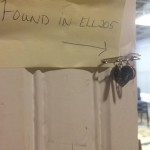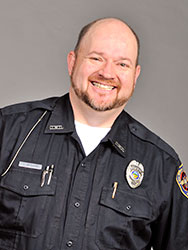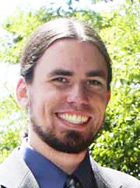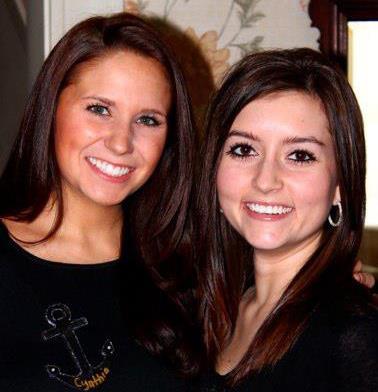Swimming team falls, but solo students rise to success
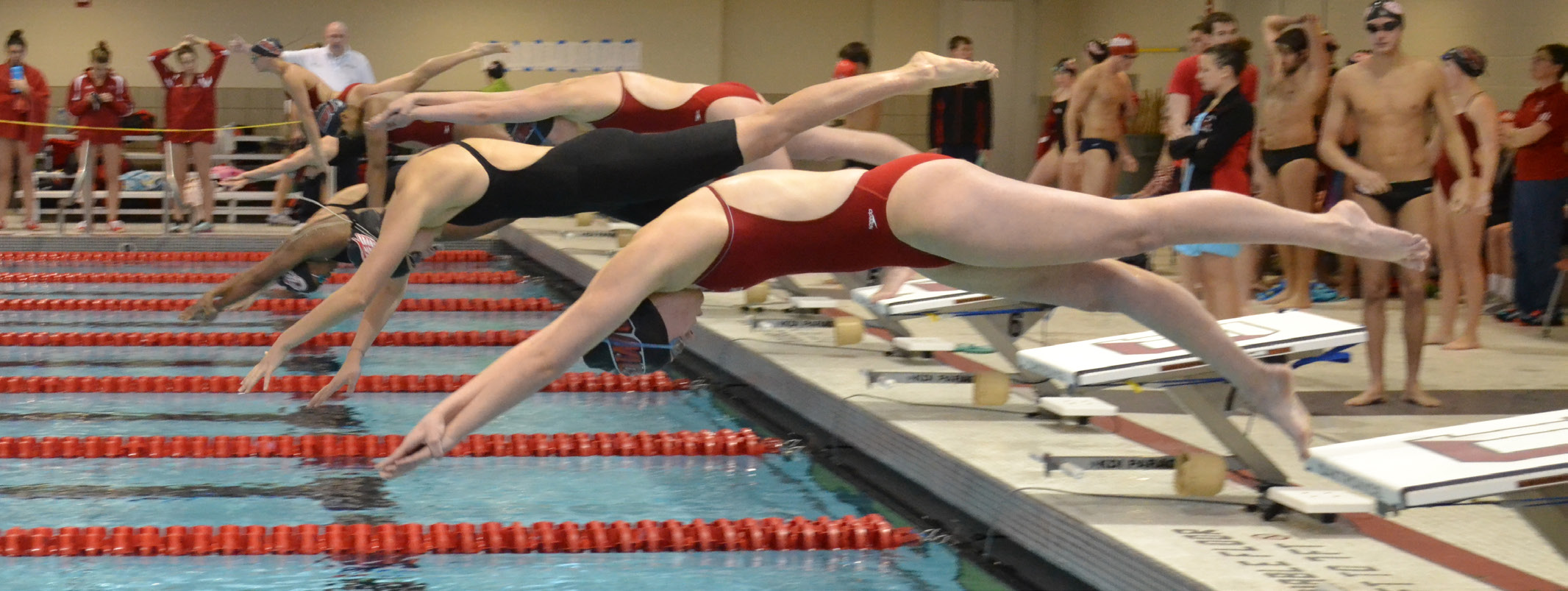
Freshman Anne Edwards set a school record at last weekend’s swimming and diving competitions, but the men’s and women’s teams still lost to Denison University and Kenyon College.
The two dual meets were their last preconference meets of the season, and they had a few first place individual finishes, showing they remain competitive against the Division III’s top two teams.
At the Saturday morning meet against Denison, Edwards set the school record in the 1000 yard freestyle with a time of 10:55.82, placing third in the competition.
The previous record was 10:59.00 and was set by Whitney Snow in 2006.
Edwards, who previously broke school records in both the 500 and 1650 yard freestyles, said she feels like she has accomplished her immediate goals, but still strives to swim faster.
Overall, Edwards said she has been pleased with her season.
“As a freshman, on the swim team, it’s hard to adapt to new people and the training that you’ve never experienced,” she said. “However, now I feel like a member of the team and have contributed my share of work for the team.”
In terms of diving, senior Anthony Peddle scored 249.75 points in the 1-meter competition.
The men’s team also had some impressive swims at Denison. Senior Sean Anthony placed first in the 200 yard breaststroke with a time of 2:13.16, and freshman Greyson Goodwin earned the first place spot in the 500 yard freestyle with a time of 4:53.48.
Junior Matthew Mahoney placed second after Goodwin with a time of 4:57.82.
Mahoney said he was pleased with his time, and said he thinks the season has been successful for the team as a whole, “given all of the season and personal bests everyone has been getting in their races.”
“All the extra yards and practice we have put in this year are really starting to show and pay off at this point in the season,” he said.
“Everyone has been going out faster in the beginning of their races while being able to close and finish their races at a fast pace. Overall, everyone seems pretty excited to compete at conference and show the rest of the league how much we have improved since last year.”
The Bishops are part of a notoriously fast conference of Division III swimming, and hope to improve their rank from previous years.
“My strategy going into conference is to rely on the techniques that have been practiced and drilled all season long,” Mahoney said.
“This, in combination with the increased endurance from our more challenging practices this season, will help me avoid any feelings of nervousness and focus on swimming my races to the best of my abilities.”
Edwards said she is nervous about her competitors, but plans to focus on personally improving her times.
“My strategy is to swim my own race,” she said. “To me, it’s more rewarding to see a best time than placing in an event. It’s also my first experience at conference, so I want to have fun and take in the full experience.”
At the meet Friday night against Kenyon, senior Katie Helfrich finished first in the 200 yard breaststroke with a time of 2:29.76, out touching Kenyon’s Meaghan McLaughlin by almost four seconds.
Other standouts for the Bishops included sophomore Emmalee Nerantzis, who took second in both the 1000 yard freestyle and the 200 yard butterfly, and senior Olivia Gillison, placed second in the 50 and 100 yard freestyles.
On the men’s side, senior Taylor Smith finished second in the 200 yard IM with a time of 1:59.99, falling short of first place by just over a tenth of a second.
This year the conference meet will be held on Feb. 12-15 at Denison University’s Trumbull Aquatic Center.
Real-life violence affects value of Allen films
I’ve never seen a Woody Allen film.
“Annie Hall,” “Manhattan,” “Midnight in Paris,” “Vicky Cristina Barcelona” — all impeccable films, I’m sure, but none of them have come into my consciousness as a consumer of art.
Perhaps that’s why it’s so easy for me to write this. Perhaps Allen’s work is so compelling that if I had seen it, I wouldn’t be so upset that he, a man who sexually assaulted his adopted daughter when she was seven years old, has been nominated for an Academy Award.
But I doubt it.
Nicholas Kristof of the New York Times published an open letter from Dylan Farrow on his blog. In the piece, Farrow described the specifics of how Allen violated her as a child, and the harrowing effects that violation has had on her as an adult.
Surely Farrow’s description of the time Allen took her into an attic and assaulted her, or the numerous other specific memories Farrow relates — memories too specific for anyone, in my opinion, to fabricate — would cause the Academy of Motion Picture Arts and Sciences to reconsider Allen’s nomination for his latest film “Blue Jasmine.” Or maybe the Hollywood Foreign press would take away the lifetime achievement award with which he was honored last month.
But neither of those things happened. Instead, Stephen King tweeted that he thought Farrow’s piece contained “an element of palpable bitchery.” Kristof himself prefaced the letter by saying Allen was never prosecuted for the crimse and that he “deserves the presumption of innocence.” For speaking out and telling her painful story, Farrow got gaslighted by the very man who chose to host her piece and called a bitch by one of the most notable authors of the 20th century.
The problem of Woody Allen’s critical acclaim is part of a larger problem of a lack of consideration for the privileged creator’s subject position when talking about art.
To me, the actions of the artist outside the context of their work paint a picture of what’s in their head and heart, and that affects the value of what goes on the screen, canvas or page.
It isn’t that Allen’s films are valueless; they are more than likely worthy of some critical attention. But critical attention should bring every relevant detail into public discourse about the film and its filmmaker.
In all the rundowns of Oscar nominations I’ve seen, no one has given even a brief mention of Allen’s abusive past. It’s as if it never happened.
When we talk about Woody Allen, or any artist who has unrepentantly hurt someone, we must consider the effects our public conversations have on his victims. If we ignore the fact of Dylan Farrow’s abuse, what does that tell her?
To me, it’s code for, “We don’t care. You’re probably making things up. Forget about it and let this man make his acceptance speeches in peace.”
I don’t think these are good messages to be coded in our public discourse and consiousness. It is indeed rape culture that leads us to say these things, but we must remember that we are the ones who shape are culture. We have control over how we treat Dylan Farrow. And in my mind, we should treat her — and every other survivor of abuse — with humanity, dignity and trust.
I personally hope “Blue Jasmine” doesn’t win any awards at the Oscars, because the idea of Woody Allen being accoladed and propped up financially and culturally despite what he did repulses me. If you enjoyed the film, then I hope you can agree with me that if Allen does indeed win, we can’t sweep his past under the rug. When we award the abuser, we tacitly award the abuse, and no abuse deserves any sort of award.
Sisters come together in faith
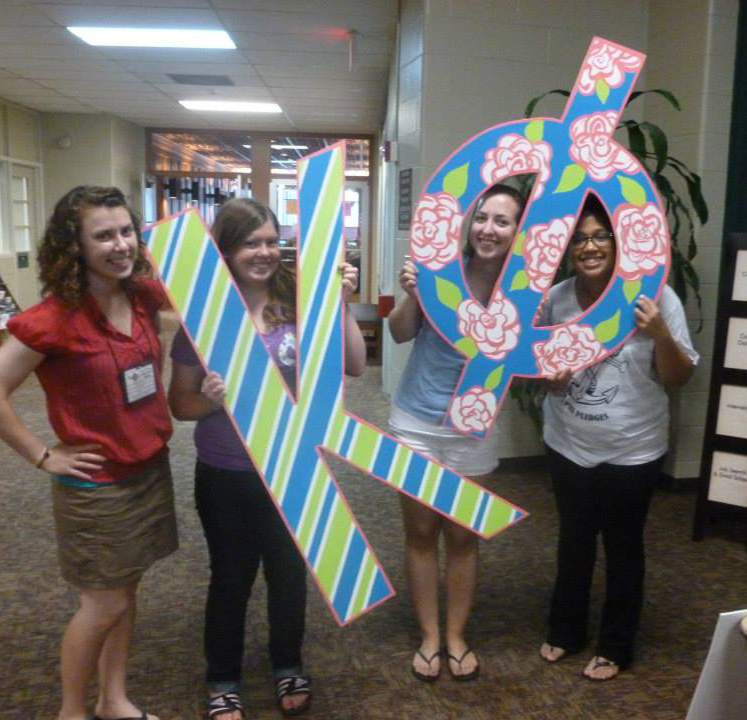
Photo from Facebook
While Ohio Wesleyan has many Greek organizations, Kappa Phi is much lesser-known on campus.
“We are a Christian women’s service sisterhood that is present on campuses across the country,” said junior Marissa Witkovsky, president of Kappa Phi. “In total there are approximately 30 chapters at different universities.”
“We focus on four areas: service, study, worship, and sisterhood,” she said.
Witkovsky said she has been involved with Kappa Phi for the past three years and has been president for the last two.
Sophomore Rebekah Mahoney, Kappa Phi’s pledge coordinator, said she joined the organization the fall of her freshman year and instantly fell in love with it.
“Kappa Phi is literally open to all Christian denominations or those who want to recapture their faith with God,” she said.
Freshman Courtney Cox recently joined this past fall and said she has gained many friendships and a closer connection to her faith.
Ohio Wesleyan’s Beta Gamma chapter of Kappa Phi currently has 20 members with different backgrounds, interests and majors.
Witkovsky, a zoology and botany double major, is also president-elect of the botany/microbiology student board and works three jobs.
Junior Makenna Huff, Kappa Phi chaplain, is a mathematics and religion double major and member of the Outdoor Ministry Team and mathematics student board.
Junior Katie Powell holds dual Greek membership, as she is Kappa Phi’s social chair and a member of Delta Zeta.
All five expressed how they want Kappa Phi to be displayed positively across campus.
“I think it would be beneficial for students to know it’s a welcoming space for women who just want to share their stories with a close group of varied, loving sisters,” Huff said.
During group meetings, which are held every Tuesday and Thursday, Kappa Phi work on service projects, volunteer locally and help with the fall’s Make a Difference Day.
On Jan. 28, the organization held Rose Tea, an event to get others interested.
Witkovsky said the Rose Tea helps to introduce possible members with “different Kappa Phi pillars.”
OWU makes change to staff to improve enrollment
By Breanne Reilly
Transcript Reporter
William Kopp won national awards for his advertising campaigns at Columbus State Community College, and a key part of his new role as Ohio Wesleyan’s chief communication officer will be boosting enrollment.
According to President Rock Jones, Kopp was hired on Jan. 2 after a national search, led by committee chair Professor Glenn Bryan.
Bryan said that the role is critical in presenting the OWU brand and requires many different skills, including aspects of marketing, communication and support of the liberal arts.
In addition to his work at Columbus State, Kopp also worked as a speech writer for Ohio State University, and manager of corporate marketing and executive communications for Columbus-based Battelle Memorial Institute.
He said his goal is to market OWU to prospective students, their parents and alumni.
“Higher education is very competitive right now,” he said, adding that attracting students and donors through marketing is an important aspect. “…Marketing is really getting your story out there. You don’t want to be the best kept secret, you don’t want to be a hidden gem, you want everybody to know the good work going on here.”
Kopp said his main goals are to make the OWU website more “responsive” and easier to use on mobile devices, and increase and improve the use of video.
He spent the past few weeks working with a videographer to interview students about the OWU Connection, experiences in Travel Learning Courses and trips funded by Theory to Practice Grants.
“I want to find out what the real brand of Ohio Wesleyan is so I can tell that story,” Kopp said. “By brand I don’t mean slogan, I don’t mean a trademark or logo, it’s the essence of the place.”
Kopp said he interviewed nine students and created 13 different videos. The videos were shot and edited by a freelance videographer, Mark Van Horn, who previously worked at WCMH-TV.
Kopp said Van Horn’s work has won national awards and OWU will be paying him $960.
The videos will be used to raise funds for student scholarships and shown at the Board of Trustees’ retreat on Feb. 5-7.
According to Jones, the retreat will be held in Naples, Florida. The purpose of the retreat is to review the Strategic Plan, review the proposed case statement for the upcoming campaign and to review the Student Housing Master Plan.
Jones said this is the first retreat in five years and it has the “best attendance” he has witnessed since he became president.
Kopp said the amount of students applying and enrolled at OWU has not decreased, but they want to increase numbers by sharing stories of successful OWU graduates with prospective students and their families.
“Parents want to know there is a future post-graduation,” Kopp said. “A survey of the class of 2013 showed that 94 percent of OWU graduates were employed, in graduate school or both.”
Dave Wottle, who has worked as interim vice president for enrollment since last fall, said Jones’ goal for the university is to attract 590 prospective students for the 2014 fall semester.
He added that a student’s academic record is the most important factor in determining acceptance.
Students who have a 3.5 or higher grade point average don’t have to submit their ACT or SAT test score.
Wottle said he also wants to improve the academic profile of the enrolled students, maximize the amount of revenue received from student tuition.
He also hopes to enroll a class diverse in socioeconomic class, ethnicity and international residency.
Weather or not, classes continue

Ohio Wesleyan did not cancel classes.
Photo by Jane Suttmeier
By Caleb Dorfman
Transcript Reporter
A cold spell sent temperatures well below zero last week, and raised the question of which weather conditions would lead to cancelled classes.
According to Craig Ullom, vice president of Student Affairs, President Rock Jones consults a group of individuals from various departments.
This group includes members of administration and finance, Academic Affairs, Student Affairs, Health Services, Public Safety and Buildings and Grounds.
“Information considered by the group comes from various sources including the NOAA National Weather Service, local weather information sources, and the Delaware County Emergency Management Center,” Ullom said.
Ullom said the team decided that in this particular weather incident, while it was very cold, there was no risk to someone walking to class as long as they dressed appropriately.
“I know it was very cold, because I walk to work every day,” he said.
Jones said if classes were cancelled, then they would also have to cancel sports practices, rehearsals and any other student events on campus.
A weather advisory email from Cole Hatcher, director of Media and Community Relations, stated classes would be cancelled if a Level 3 Snow Emergency was called.
According to the Delaware County Sheriff’s Department, a Level 3 Snow Emergency is put into effect when roadways are too hazardous to drive on.
Emails from both Jones and Hatcher gave students and faculty advice on how to dress for the weather.
According to Jones, if this type of weather occurs again, the university would increase the number of vans transporting students around campus.
Jones said he would also like to see the vans run later in the day.
The vans, which were driven by student, faculty and staff volunteers, ran from 7:30 a.m. until 5 p.m. on Tuesday, and from 7:30 a.m. until noon on Wednesday.
Temperatures on Tuesday dropped as low as 14 degrees below zero, with wind chill temperatures as low as 25 degrees below zero, according to the Weather Channel.
Junior Brandy Booth said she has lived in Ohio her entire life, and she has never experienced weather like this.
To cope with the cold, Booth said she “wore a lot of layers” and carpooled.
SLUsh 2014 brings scores of students
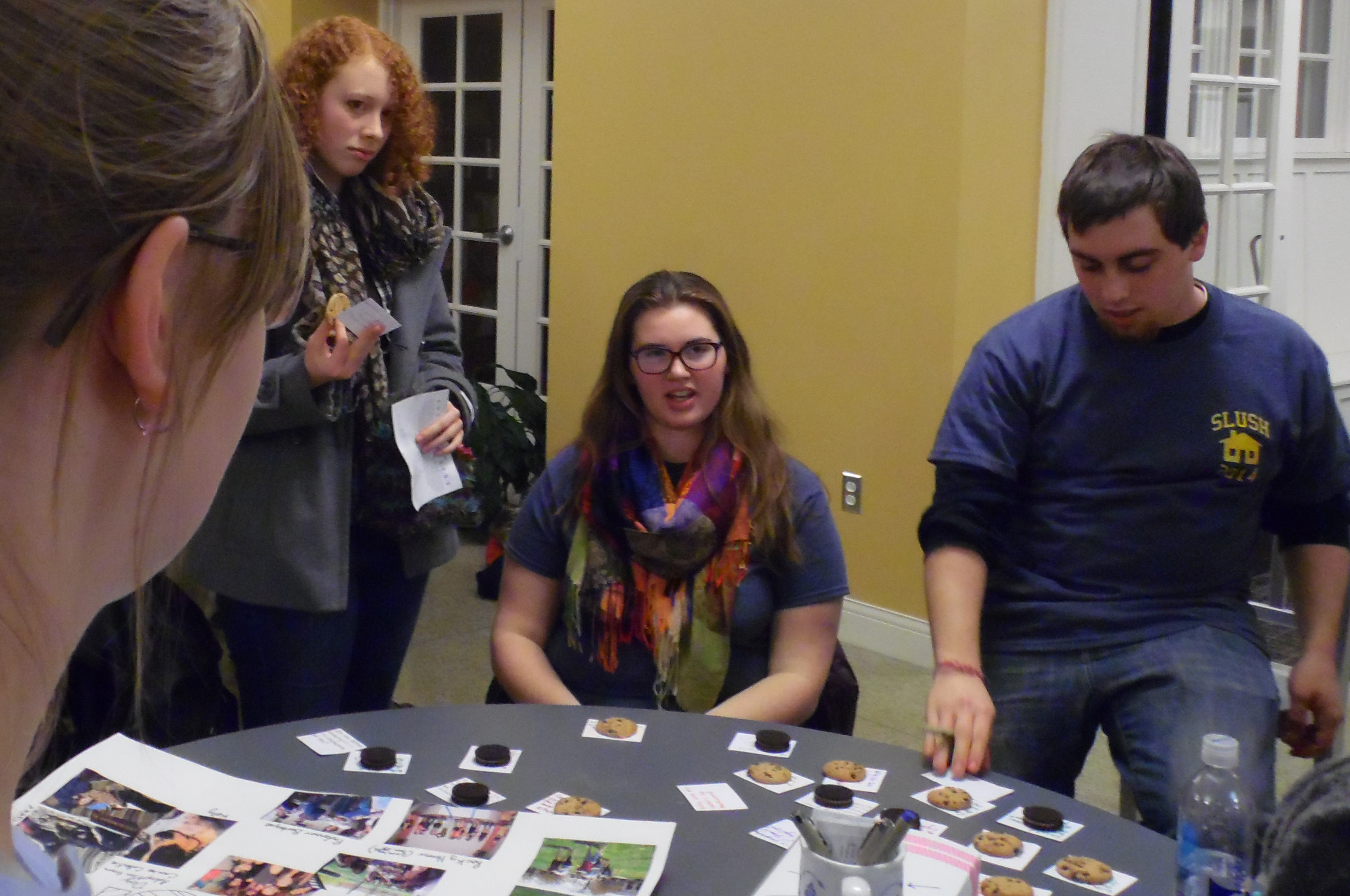
Photo by Spenser Hickey
The snow and ice were an appropriate setting for many students who found new homes for next semester in this year’s Small Living Unit (SLU) recruitment.
SLUsh is the week-long period where the campus’s SLUs recruit residents. This year, they had a much larger number of applicants than usual, according to house moderators.
Applicants were informed of each SLU’s decision on Feb. 4 and have until the 10th to decide.
The process began with an all-SLU event Jan. 27 in Stuyvesant Hall to introduce interested student to each of the seven houses on campus.
Each SLU has a central theme. Houses include the Modern Foreign Language House (MFL), Citizens of the World House (COW), House of Thought (HoT), Interfaith House (IF), House of Peace and Justice (P&J), Tree House, and Women’s House (WoHo).
Freshman McKenna Brewer, applied to both COW and WoHo, and thought the process was fairly straightforward.
“I liked the smaller events at each of the houses I went to as well,” she said.
Brewer found out on Tuesday that she was accepted as a new member of WoHo.
Senior Alex D’Amore-Braver, moderator of House of Thought, said his house had five spots to fill and held 18 interviews.
He said this made the process very time-consuming, as they spent ten and a half hours holding interviews and deliberating.
While this may have led to some students being written off early, D’Amore-Braver said they “have a fantastic roster for next year.”
Senior Ashley Madera, moderator of Citizens of the World House, said they also have five full-year spots, as well as two for fall semester.
When searching for potential members, they consider three major aspects: passion, individuality and willingness to make COW their home.
“We want applicants who want to make COW their second home and not just a bed to sleep in,” she said.
Madera said they received 25 applications, which made the process a lot longer than usual.
“We really had to pick those individuals who stood out from the rest in all these areas rather than just one or two,” she said.
Sophomore Margot Reed, a resident of P&J, said her house accepted seven new members for next semester out of 21 applicants.
“I think one of the biggest challenges that created was trying to pick people that would please everybody already in the house,” she said.
Reed said it finding a consensus among the 17 current members on one person is difficult, and even more so when there are eight spots.
Like House of Thought and Citizens of the World House, the Modern Foreign Language House also has five spots open.
Senior Kate Johnson, MFL moderator, said they look for dedication to the house’s mission, an open mind and a personality that matches well with current members.
“We are looking for students who are studying languages or native speakers of non-English languages who have a strong interest in promoting intercultural understanding,” she said.
To evaluate interested students, each SLU held a two-hour long open house, providing applicants with interview sign-ups for Feb. 1 and 2.
The week’s events concluded on Jan. 31, with a screening of “Rocky Horror Picture Show” by the House of Thought, other SLU residents and non-members.
Atheists seek space
Atheist and agnostic students now have access to campus resources provided by junior Avery Winston and senior Maddy Leader, with help from staff of the Chaplain’s and Service Learning Offices.
Currently, these resources are limited to a collection of books on the fourth floor of Hamilton-Williams Campus Center.
Last spring, Winston proposed a resource center for atheist and agnostic students, but the proposal was turned down due to a lack of funds, space and demand. Instead, Winston decided to set up the bookcase for interested students.
“It’s not just about religion; it’s about creating a safe zone for (atheist and agnostic) students,” he said. “There are books here about losing faith, about how to come out (as an atheist), about getting harmed by faith, living well and positively without faith.
“It’s just about showing people they’re not alone…I’m not worried about what’s taught in classrooms or anything.”
The books currently available are mostly from Winston’s personal collection and others donated by friends and alumni.
Winston said he is also seeking $500 from WCSA to get enough books to fill the case, a request that is still under review.
“We deserve something on campus that caters to people of our mindset,” he said.
Leader said her motivation comes in part from a perceived prejudice against agnostic and atheist students that she has encountered as a member of Freethinkers, a campus club that includes diverse views on faith and promotes open discussion of philosophical issues.
After becoming a cabinet member for Freethinkers, Leader and others posted calendars around campus outlining secular holidays.
“The next day, most had been torn down,” Leader said. “…One had been vandalized — scratched up with black marker so you couldn’t tell what was on it.”
Despite this, both say they have found an abundance of support from faith-based organizations on campus. In particular, Winston and Leader point to chaplains Jon Powers and William Hayes, the adviser for Freethinkers, as sources of support for their cause.
They also said Sally Leber, director of the Community Service Learning Office, helped them get permission to use the bookcase in HWCC to make these materials available to students.
Both students wanted to be clear they are merely trying to show support for atheist or agnostic students on campus.
According to Winston, while the materials may espouse a view that is not religious, they are not “proselytizing against faith.”
He said the effort is merely to contribute to the “diversity of thought” on campus and hopes others will understand that.
‘Monologues’ and ‘Confessions’: A Preview of Women’s Week Plays
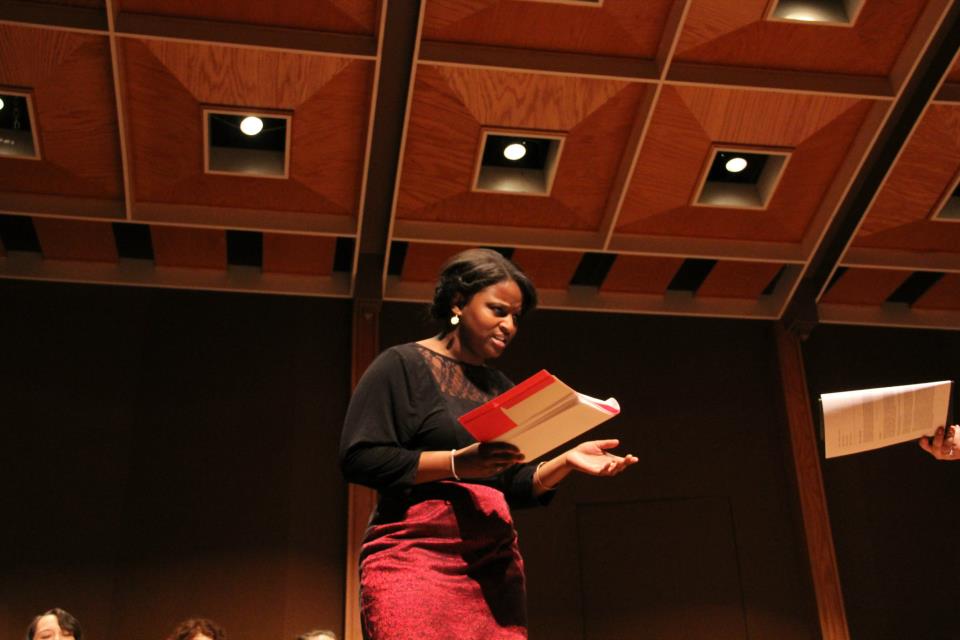
Photo by Jane Suttmeier
Female students will intersect femininity and ethnicity in a pair of performances centered on the empowerment of women.
“The Vagina Monologues,” first performed at Ohio Wesleyan University in 2006, will be joined by Yetta Young’s “Butterfly Confessions” in the 2014 show.
Auditions for both performances were held this past weekend in Smith Hall and were open to all self-identified female students.
“The Vagina Monologues,” which is a play by Eve Ensler, is formatted into a series of monologues that tell women’s stories and experiences.
The pieces discuss empowerment, sexual violence, positive sex, and seeking justice and healing for women who are survivors of sexual violence.
“Butterfly Confessions” is similar to “Monologues,” but explores the relationship between womanhood and ethnicity. As Young describes in her LinkedIn profile, “‘Butterfly Confessions’ is a love letter to women and girls of color that reveal heartfelt emotions about intimacy, sexual responsibility and overcoming adversity. Audiences will be taken from girlhood to womanhood as “Butterfly Confessions” airs our dirty laundry.”
Sophomore Kaila Johnson auditioned for a part in the performance, and plans to be as involved as possible in the show.
“I am very eager and excited about the fact that we have brought (“Confessions”) to OWU,” said Johnson.
“I think that the women of color on this campus often get left out when it comes to discussions about the different issues and problems that exist in today’s world.”
Senior Claire Hackett said “Confessions” was added to expand the movement to those not reached by “Monologues.”
“Women of color should have a space where their voices can be heard and everyone else can listen,” Hackett said.
Echoing Hackett’s statement, junior Brianna Robinson said the event developed as a result of “a group of women who are passionate about the voices of all women being heard.”
“Confessions” discuss topics such as colorism, sexuality, AIDS, and self-love. The directors for the performance include Robinson, Nola Johnson, Khristina Gardner, Kaila Johnson and Felicia Rose.
In last year’s Monologues show, Robinson performed “My Angry Vagina.”
She also read a piece titled “Respect” by activist Kimberly Crenshaw that echoes many of the same themes as “Confessions.”
“The Vagina Monologues” co-directors Hackett, senior Margaret Knecht, and junior Zoe Crankshaw conducted their auditions separately in order to determine each candidate’s comfort level with various subject materials.
“It was very stress-free,” said sophomore Claudia Bauman, referring to her audition process. Last year, Bauman read the monologue “My Vagina Was My Village.”
“My Vagina Was My Village” describes the experiences of Bosnian women who survived wartime rape in the early 1990s.
“From the moment I picked up (“The Vagina Monologues”) I fell in love with it,” Bauman said.
“I love reading women’s stories, the good and the bad, from around the world, which in turn, opens my mind to hardships and to understanding others.”
Fresh music, fresh voices
Owtsiders, Ohio Wesleyan University’s only co-ed a Cappella group, has six new voices.
Sophomore Camille Mullins-Lemieux, Owtsiders co-director, said the auditions went well but she hoped that more people would have come.
Sophomore president Julia Stone said she agreed with Mullins-Lemieux.
“I think the cold weather deterred some people from coming out,” Stone said.
“We were able to find all the singing parts that we need though, and I’m happy with the talent we found.”
The audition process consisted of three parts: a prepared song, a blending exercise and a test of one’s range.
Junior Katie Butt said she messed up the words to her Rihanna mash up of “Disturbia” and “The Monster.”
“But no one noticed,” she added.
The groups’ new members range in grade level, with three freshmen, one junior and two seniors. Mullins-Lemieux said she is excited about the full sound and fresh energy that these members will bring to the group.
Freshman Curtice Taylor, who is also involved in the Choral Arts Society, said he is looking forward to singing a cappella, as well as being a part of the Owtsiders’ community specifically.
Butt was previously a member of the Owtsiders, and the female a cappella group Pitch Black, but had to leave both due to the intense time commitment.
She said she was excited to learn that the Owtsiders were having auditions again.
“I missed that environment – just hanging out with people and creating beautiful music together,” Butt said. “It’s laid-back and a lot of fun,” she said.
Freshman Megan Marren wanted to audition in order to be more involved on campus.
“It wasn’t a hard audition, but it was nerve wracking sitting around and waiting until my turn came up,” Marren said.
In the past, the Owtsiders have performed at Ollie’s Fine Ice Cream, a local ice cream parlor.
They also sang on stage at “A Cappellooza!” an event sponsored by Campus Programming Board that featured a cappella groups from OWU and surrounding schools.
Stone said that the group has plans to sing at J. Gumbo’s, a local restaurant, on Mardi Gras and to have more sporadic performances in the atrium of Hamilton-Williams.
“I’m hoping that we are able to have a great semester full of new music and more performances,” Stone said. “We’re going to start the semester by working on Counting Stars by One Republic and Royals by Lorde.”



